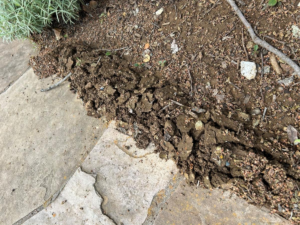Moles
Mole Habits, Diet, and Behavior
Moles have long fascinated and intrigued us with their mysterious habits and secretive lifestyle. Here, we delve into the depths of their world, shedding light on their diet, behavior, and unique adaptations.
Underground Dwellers:
Beneath the landscapes of the East Bay California lies a hidden world, where moles reign supreme as the masters of the subterranean realm. With their velvety fur and shovel-like forelimbs, these small mammals are perfectly adapted for a life spent burrowing. But what drives these creatures to spend the majority of their lives underground?

Mole Habits:
Moles are creatures of habit, following a strict routine dictated by their underground lifestyle. They are most active during the early morning and late evening hours, preferring the cooler temperatures and reduced risk. During these times, they excavate their intricate tunnel networks, searching for their next meal. But what exactly do moles eat, and how do they sustain themselves in their underground domain?
The Diet of Moles:
Contrary to popular belief, moles are not voracious consumers of plant roots. Instead, they have a diverse diet that includes a variety of invertebrates such as earthworms, grubs, and insects. Their keen sense of smell and highly specialized forelimbs allow them to detect and capture prey with remarkable efficiency. Moles are formidable hunters in the dark, labyrinthine tunnels they call home. But what role do moles play in shaping their underground ecosystem, and how do they interact with other species in their environment?
Mole Behavior:
In addition to their remarkable hunting abilities, moles exhibit fascinating behaviors that further highlight their adaptability. They are solitary creatures, preferring to lead solitary lives within their tunnel systems. However, during the breeding season, male moles may venture out in search of mates, engaging in elaborate courtship displays to attract potential partners. Once mating occurs, females will construct special nesting chambers within their tunnels, where they will raise their offspring until they are old enough to fend for themselves.
Moles as Pest Problems
Understanding the Mole Problem
Moles, while small in size, can cause significant damage to lawns, gardens, and landscapes. Their burrowing habits not only disrupt the aesthetics of your property but also compromise its structural integrity. With our expertise in mole behavior and habitat, we can effectively identify and address the root cause of the infestation.
Customized Mole Control Strategies
Our approach to mole control is rooted in precision and effectiveness. Using a combination of humane trapping techniques and eco-friendly repellents, we ensure the removal of moles from your property. Additionally, we provide proactive measures to prevent future mole infestations, giving you long-term peace of mind.
Take Control of Your Mole Problem Today
Benefits of Choosing Our Services
- Experienced Professionals: Our team consists of skilled pest control experts with years of experience in handling mole infestations.
- Safe and Eco-Friendly Solutions: We prioritize the safety of your family, pets, and the environment by using non-toxic methods for mole control.
- Customized Approach: Every property is unique, and so are our solutions. We tailor our mole control strategies to suit your specific needs and preferences.
FAQs About Mole Control
Moles create tunnels under the surface of the soil as they search for insects to eat. These tunnels can cause the soil to become loose and uneven, leading to the formation of molehills and damage to plant roots.
The mole repellents we use are safe for pets and children when applied and trated correctly.
The timeframe for seeing results may vary depending on the severity of the infestation and the specific methods used. In most cases, you can expect to see a noticeable reduction in mole activity within a few days to a week.
Call 888-669-3460 today!
We're here for you.
We are glad to answer any questions or schedule an appointment.
We provide commercial and residential pest control services in the South San Francisco Bay, Tri-Valley areas, and Santa Cruz County.









